9-Aminocamptothecin
- CAS NO.:91421-43-1
- Empirical Formula: C20H17N3O4
- Molecular Weight: 363.37
- MDL number: MFCD00909855
- SAFETY DATA SHEET (SDS)
- Update Date: 2024-11-19 20:33:22
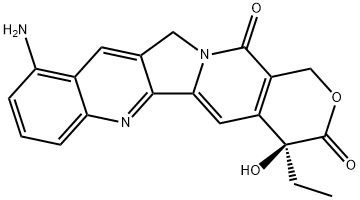
What is 9-Aminocamptothecin?
The Uses of 9-Aminocamptothecin
9-Amino Camptothecin is a derivative of Camptothecin (C175150), as antitumor agent.
What are the applications of Application
9-Aminocamptothecin is an active derivative of camptothecin and topoisomerase inhibitor
Definition
ChEBI: 9-Aminocamptothecin is a pyranoindolizinoquinoline.
Biological Activity
9-amino camptothecin is a topoisomerase i inhibitor [1][2].dna topoisomerases relax dna torsional strain generated during replication, transcription, recombination, repair, and chromosome condensation. the relaxation of dna supercoiling by topoisomerase i is enabled by a mechanism of controlled rotation around a transient dna single-strand break. camptothecin (cpt) is isolated from the bark of the chinese tree camptotheca accuminata [3].9-amino camptothecin, a water-soluble camptothecin analogue, is a topoisomerase i inhibitor. in human ht-29 colon adenocarcinoma, 9-amino camptothecin (9-ac) exhibited cytotoxicity with ic50 value of 19 nm. 9-ac also induced dna damage in whole cells and nuclei at a concenstration of 85 nm and 21 nm, respectively [1].9-amino camptothecin had greater activity than camptothecin against human tumour xenografts, including lewis lung carcinoma and b16 melanoma. 9-ac had entered phase ii trials. in patients with advanced solid tumours, 9-amino camptothecin exhibited anti-tumor activity [1][2].
References
[1]. rothenberg, m.l. topoisomerase i inhibitors: review and update. annals of oncology 8(9), 837-855 (1997).
[2]. dancey j, eisenhauer ea. current perspectives on camptothecins in cancer treatment. br j cancer. 1996 aug;74(3):327-38.
[3]. drwal mn1, agama k, wakelin lp, et al. exploring dna topoisomerase i ligand space in search of novel anticancer agents. plos one. 2011;6(9):e25150.
Properties of 9-Aminocamptothecin
| Melting point: | 142.0-145.0 °C |
| Boiling point: | 819.6±65.0 °C(Predicted) |
| Density | 1.55±0.1 g/cm3(Predicted) |
| storage temp. | 2-8°C(protect from light) |
| solubility | ≤1mg/ml in DMSO;1mg/ml in dimethyl formamide |
| form | powder to crystal |
| pka | 11.23±0.20(Predicted) |
| color | Light yellow to Yellow to Orange |
| Merck | 14,431 |
| CAS DataBase Reference | 91421-43-1(CAS DataBase Reference) |
Safety information for 9-Aminocamptothecin
| Signal word | Warning |
| Pictogram(s) |
 Exclamation Mark Irritant GHS07 |
| GHS Hazard Statements |
H302:Acute toxicity,oral |
| Precautionary Statement Codes |
P280:Wear protective gloves/protective clothing/eye protection/face protection. P305+P351+P338:IF IN EYES: Rinse cautiously with water for several minutes. Remove contact lenses, if present and easy to do. Continuerinsing. |
Computed Descriptors for 9-Aminocamptothecin
| InChIKey | FUXVKZWTXQUGMW-FQEVSTJZSA-N |
New Products
4-Aminotetrahydropyran-4-carbonitrile Hydrochloride (R)-3-Aminobutanenitrile Hydrochloride 4-AMINO-TETRAHYDRO-PYRAN-4-CARBOXYLIC ACID HCL 4-(Dimethylamino)tetrahydro-2H-pyran-4-carbonitrile 3-((Dimethylamino)methyl)-5-methylhexan-2-one oxalate 1,4-Dioxa-8-azaspiro[4.5]decane 5-Bromo-2-nitropyridine Nimesulide BP Aceclofenac IP/BP/EP Mefenamic Acid IP/BP/EP/USP Diclofenac Sodium IP/BP/EP/USP Ornidazole IP Diclofenac Potassium SODIUM AAS SOLUTION ZINC AAS SOLUTION BUFFER SOLUTION PH 10.0(BORATE) GOOCH CRUCIBLE SINTERED AQUANIL 5 BERYLLIUM AAS SOLUTION 2-Bromo-1-(bromomethyl)-3-chloro-5-nitrobenzene 2-Bromo-3-nitroaniline N-(3-Hydroxypropyl)-N-methylacetamide 3-Bromo-6-chloropyridazine 4-ethyl-3-nitrobenzoic acidRelated products of tetrahydrofuran
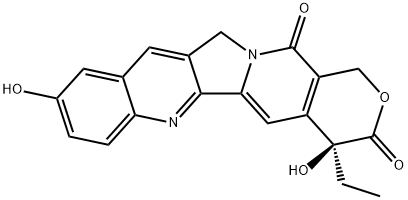


![1H-Pyrano[3',4':6,7]indolizino[1,2-b]quinoline-3,14(4H,12H)-dione, 4,11-diethyl-4-hydroxy-9-methoxy-, (4S)-](https://img.chemicalbook.in/CAS/20210111/GIF/86639-53-4.gif)
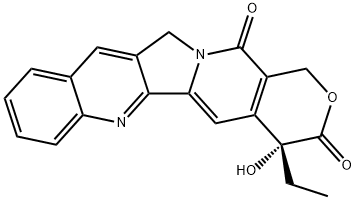
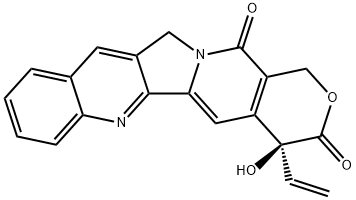
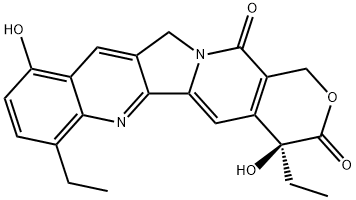
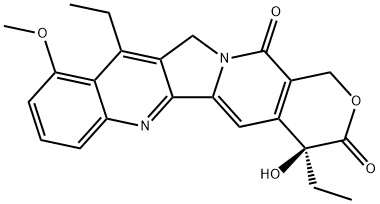
You may like
-
 9-Aminocamptothecin CAS 91421-43-1View Details
9-Aminocamptothecin CAS 91421-43-1View Details
91421-43-1 -
 1-Methyl-6-oxo-1,6-dihydropyridazine-3-carbonitrile 98%View Details
1-Methyl-6-oxo-1,6-dihydropyridazine-3-carbonitrile 98%View Details
99903-60-3 -
 1823368-42-8 98%View Details
1823368-42-8 98%View Details
1823368-42-8 -
 2-(3-(tert-butyl)phenoxy)-2-methylpropanoic acid 1307449-08-6 98%View Details
2-(3-(tert-butyl)phenoxy)-2-methylpropanoic acid 1307449-08-6 98%View Details
1307449-08-6 -
 Ethyl 3-(furan-2-yl)-3-hydroxypropanoate 25408-95-1 98%View Details
Ethyl 3-(furan-2-yl)-3-hydroxypropanoate 25408-95-1 98%View Details
25408-95-1 -
 2-Chloro-5-fluoro-1-methoxy-3-methylbenzene 98%View Details
2-Chloro-5-fluoro-1-methoxy-3-methylbenzene 98%View Details
1805639-70-6 -
 1784294-80-9 98%View Details
1784294-80-9 98%View Details
1784294-80-9 -
 Lithium ClavulanateView Details
Lithium ClavulanateView Details
61177-44-4